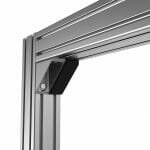~ How gamification is transforming Industry 4.0 ~
What’s the best way to boost employee morale? Can we make human machine interfaces (HMIs) more interactive? How can autonomous guided vehicles (AGVs) become easier to programme? The answer to some of the most common questions in manufacturing may not lie in typical approaches, but rather in gamification. Neil Ballinger, head of EMEA sales at automation parts supplier EU Automation, explains how playful elements could benefit Industry 4.0.Gamification is the implementation of game mechanisms, strategies and visual elements in a non-game context, such as manufacturing. It may be surprising, but many of the problems that users encounter when interacting with industrial equipment are the same as those players must tackle in games.
For example: what’s the most cost-effective way of managing resources through the different stages of production? It’s a strategy game! Or, how can AGVs be faster and more efficient in moving items from point A to point B? It’s a racing game!
It’s all in your head
One area where the principles of gamification are being successfully applied is in the creation of highly interactive HMIs.
Traditionally, manufacturing processes centre on the machines and their requirements to optimise productivity, quality and profit. On the other hand, gamification processes centre on users and their interests. Games stimulate players’ attention with a combination of attractive design and highly interactive mechanisms, and the user is constantly asked to input orders and react to environmental changes.
The principles of gamification are rooted in concepts from behavioural and motivational psychology and are proven to raise users’ attention spans and alleviate cognitive fatigue. When transferred to a factory setting, this may result in higher levels of job satisfaction, improved quality of work and increased safety. Also, according to the Industrial Psychiatry Journal, more alert users are less likely to make mistakes.
For these reasons, gamification can be useful when designing HMIs for the factory floor. As with games, HMIs can offer visual and auditive feedback in response to the user’s input. The system can also reward the user with a series of points after a correct action, measure them against a set daily target, or suggest the following action after a task has been successfully completed.
Centigrade, a German design engineering company, is already offering tailored gamified software for HMIs that incorporates all of these techniques.
At the Hannover Messe 2015 exhibition, Centrigrade unveiled its collaboration with SEW-EURODRIVE, a leader in industrial drive technology. The companies devised a gamified control system for AGVs used to transport boxes in a factory. The user interface presented a bird’s eye view of the carrier boxes in the form of a real-time video stream. Augmented reality (AR) added status information for each box, inviting the user to line-up the boxes with “drag and drop” actions, not unlike in a video game.
This collaboration demonstrated that forward-thinking manufacturers already understand the potential of gamification in real-life applications.
We need a strategy
Resource management is the basis of many strategy games, such as SimCity, where players must develop a city, planning roads and infrastructure while sticking to a budget.
One distinctive feature of these games is that one action from the user triggers a chain of events. For example, if the player starts building infrastructures but miscalculates the required funding, strikes will ensue.
The same principle can work on a production line where one action triggers a series of automatisms. If an operator orders the loading of a product into a carrier box, the input will translate this into a chain of commands: “call a mobile vehicle”, “load the item into the carrier box”, “deliver the item to its target destination”, “unload”, “return the vehicle to the original position” and so on.
Gamification can be another way in which digitalised manufacturing uses data from the Internet of Things (IoT) to optimise manufacturing processes. As with other Industry 4.0 technologies, by enlisting the support of a dedicated parts supplier it could be possible to revamp legacy equipment with smart sensors, add communication capabilities or plug and play technologies and introduce new gamified interfaces to factories.
This applies whether they are is used to boost employee morale, reduce error rates and increase production efficiency, or ease the programming of AGVs.
To discover more, visit www.euautomation.com.








